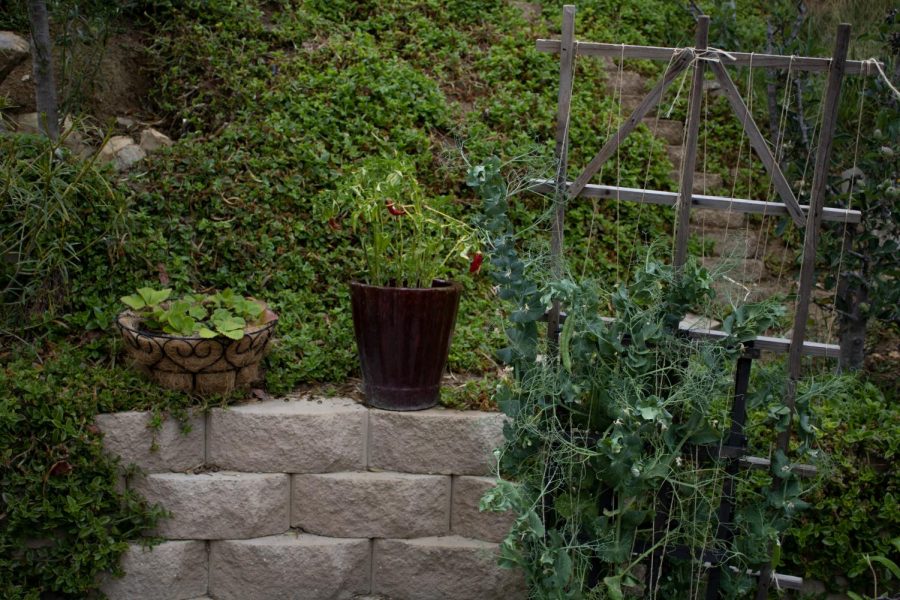How to Start Your own Home Garden
April 30, 2021
With spring upon us and summer on the way, there is no better time to set up your own home garden. If you have the space available, and are committed enough, you can have fresh home-grown fruits, veggies, and herbs in no time! Not only will you be getting free produce, but you will also be doing your part to help out the planet.
To get things started, find a place in your backyard where you will be planting. This place needs to get a good amount of sunlight, and would be best if it’s level — that will make things a lot easier to work with. Clear the area by removing the dirt or sod to expose the soil underneath. You can choose to plant straight into the ground, or in a raised bed, whichever you prefer.
According to Better Homes and Gardens, improving your soil will give your plants the best chance at a good growth. To enrich the soil, the best route to take is adding organic material, like compost or top soil. Leave a two to three inch layer on top, and earthworms will do some mixing! However, you will still have to do some manual digging. With a spade, turn the top eight to 12 inches to mix in the organic material (bhg.com).
Now you get to pick what you want to grow. Vegetables and herbs will be your best bet when kicking things off. While there are some fruits that grow on vines and small bushes, most grow on trees, which you can still plant of course! Make sure to choose plants that are adapted to your climate, soil and sunlight. Some great beginner plants are strawberries, cucumbers, peppers, lettuce, and tomatoes. You can also read the tags that come with the seeds or transplants that give instruction in greater detail. Time to get planting! Space out the holes evenly, and drop in your seeds or your plants. If you are using a transplant, break up the roots softly with your hand before placing it in the hole. Pack the soil back in and then water (bhg.com).
This is where the time and dedication come in. Watering and tending to your plants is key to keeping your home garden alive and preventing it from turning into a weed patch. You can’t let the seedlings dry out, so they need water everyday, whereas transplants can get water every other day. As they grow to be bigger, you can then adjust your watering cycle. If you are unsure if your plants need water, feel the soil about three inches below the surface. If it’s dry, then it’s time to water. To protect your garden from weeds and to help keep moisture in, cover your soil with mulch. To maintain your garden, you must keep up with standard garden chores: watering, pulling weeds, cutting off dead vegetation, and keeping an eye out for pesky critters (bhg.com).
When you start your own home garden, you are doing countless actions to help better the environment. Cutting down on your carbon footprint is one of the first things you tackle. If you have the fruits and veggies you need, then you don’t have to make as many trips to the store. Also, most of our food has to travel thousands of miles just to get to our local store. Growing helps with replenishing the soil. Annual vegetation provides materials both above and below the surface of the soils, enriching the soil for next season’s growth; therefore, no need for those polluting fertilizers (usgreentechnology.com).
Senior Jordan Stahl shared, “I’ve had my home garden for a couple years now and it’s awesome. We have fresh vegetables any time we need them. I would really recommend starting a home garden to anyone who wants to start doing more for the environment.”
If you don’t have available space to start your own home garden, see if there are any community gardens located near you, or even purchase your produce from a farmers market. Either way, you will still be contributing to lowering food miles, controlling what is being put into the ground, and decreasing the pollution that runs in our waters and air.



Eco-Friendly Nano-Carbon Bio-Stimulant • Feb 21, 2022 at 3:15 am
Starting in small pots on your porch is a good start because you don’t have to buy gardening stuff yet. But of course, before you start, you have to know the basics of gardening first.
Thanks for sharing this blog.
Eco-Friendly Nano-Carbon Bio-Stimulant